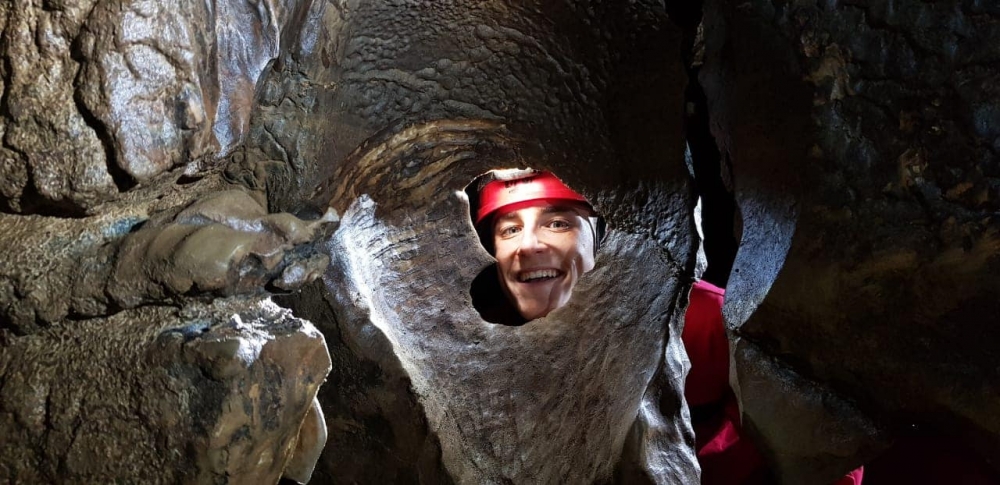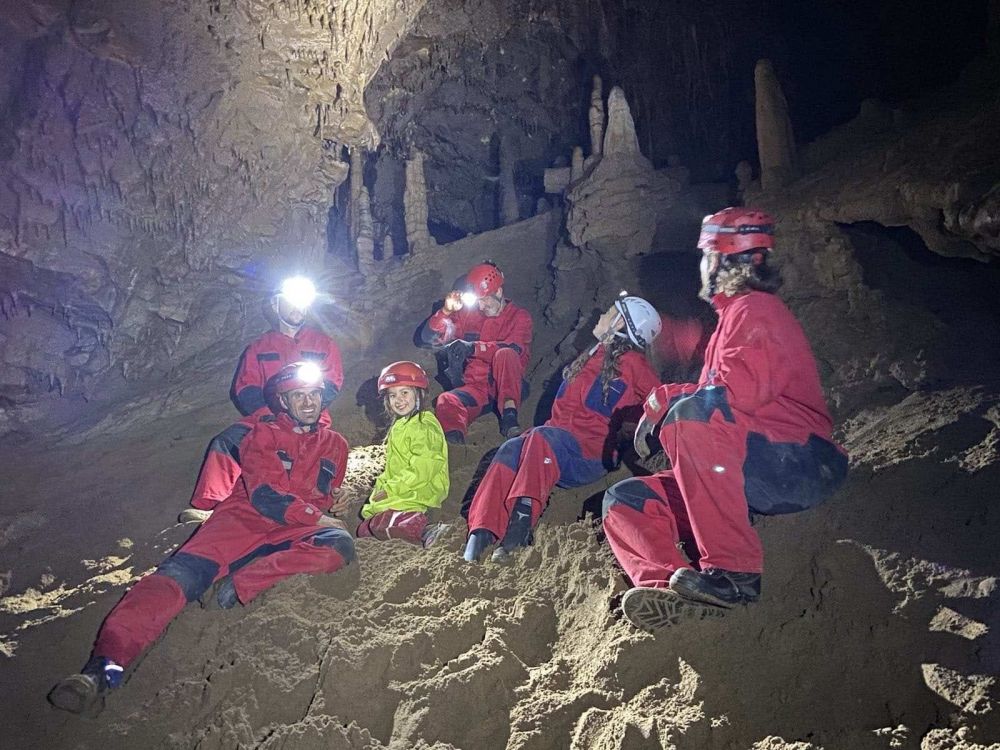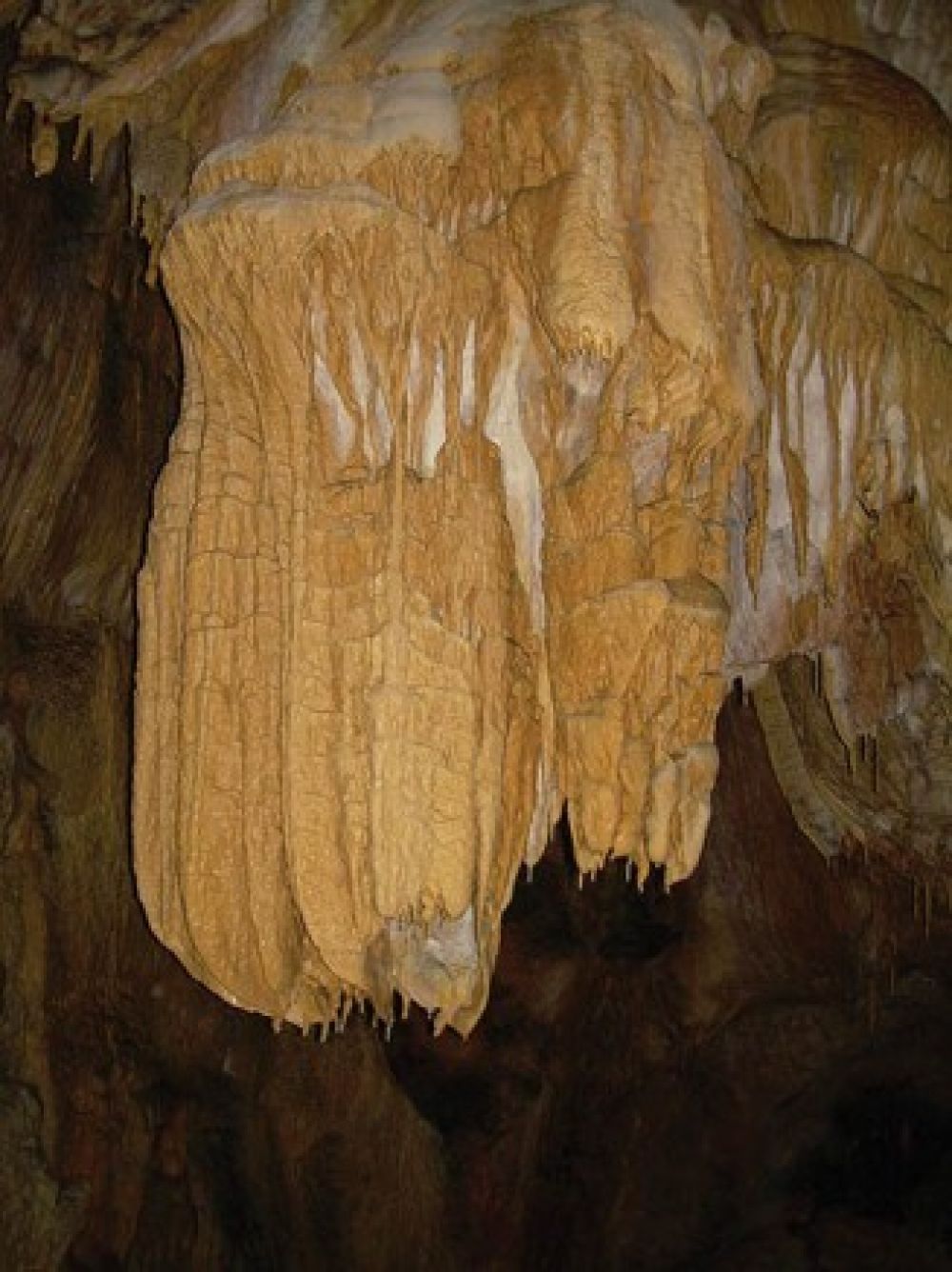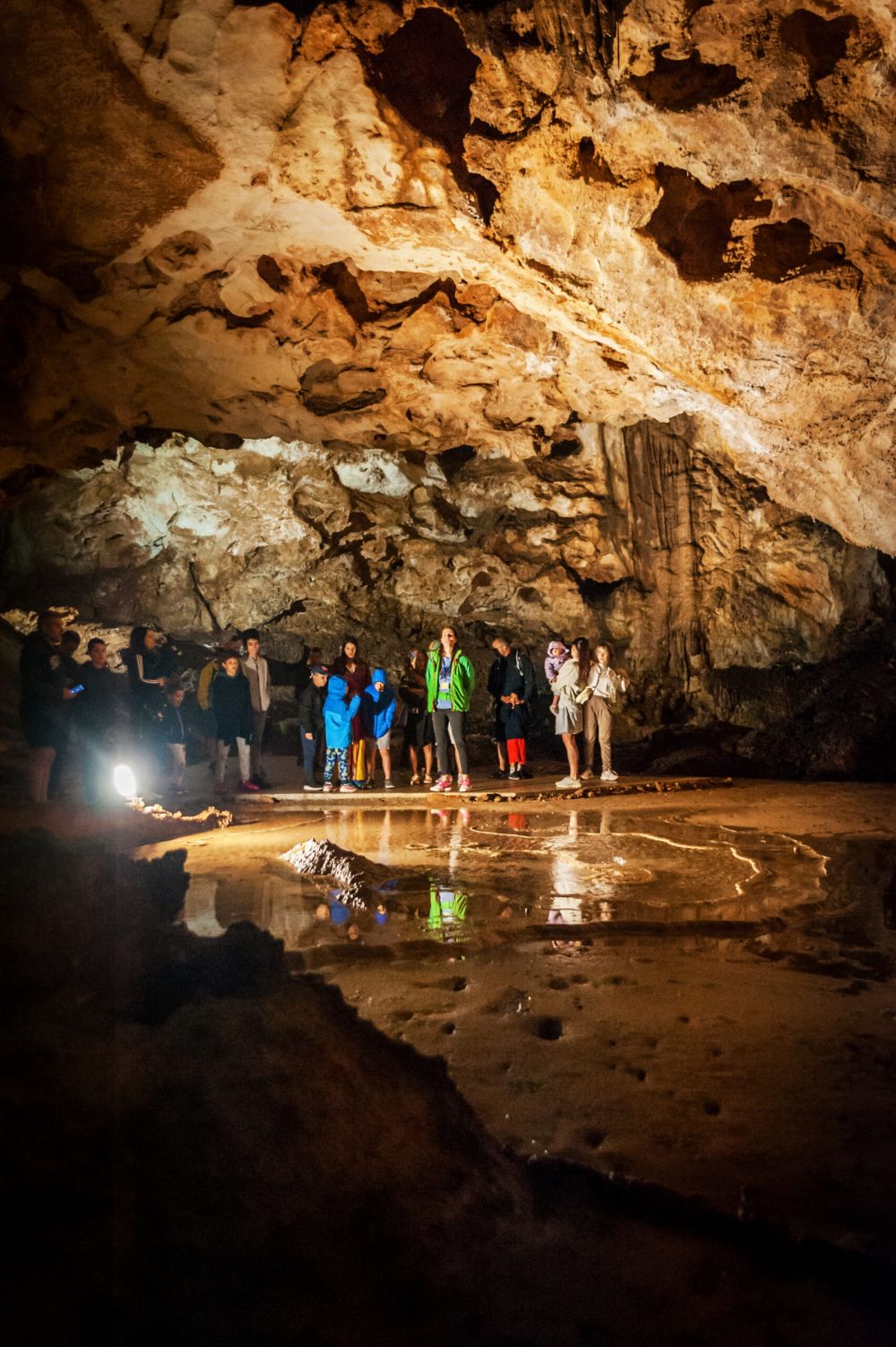
Author: Ivana Milicevic Kalic
Montenegro is a relatively small country and you can travel from north to south in just a few hours. However, it offers incredible natural diversity. Its Adriatic coast, rocky and sandy, with many beautiful hidden bays is breathtaking. Mountain peaks, vast forests, hidden lakes and picturesque rivers can also be singled out as unmissable natural attractions.
You will often hear about Montenegro that the country is karst. In addition to the natural beauties visible to casual passers-by, Montenegro also abounds in beauties created millions of years ago, hidden in the chambers of caves and pits, which unfortunately, due to inaccessibility or unorganized access, are only available to true lovers of wild beauty, speleologists and mountaineers. We currently know about 1,600 caves in Montenegro, and there are thousands of unexplored ones. Many hide underground corridors, cave jewelry, a hidden living world of darkness and much more. Organized tourist visits are possible only in Lipska Pečina, while entry into the other caves is only possible with an experienced guide - speleologist. Every stalactite and stalagmite found in their chambers is priceless.
The one who finds himself in the bowels of the earth, far from the "overworld", surrounded by silence and cave decorations, will find it difficult to say which of the caves is more or less beautiful.
In the rest of the text, we will list some of the most famous caves and pits in Montenegro.
Dalovica Cave, or as it is popularly known as "Cave over Devil's Firs" - is one of the longest and most beautiful natural pearls of Montenegrin nature. So far, about 17.5 kilometers of the cave have been explored, and it is estimated that speleologists can expect another 100 kilometers of underground channels. The cave consists of a large number of channels, corridors and halls, which according to their position and characteristics can be divided into several units: "Channel with lakes", "Great Labyrinth", "Great Canal", and part of the cave in the continuation of the "Great Canal" which is separated by siphons - "Channel behind the siphon". From the spacious entrance, the path through the cave leads through the inhospitable "Canal with lakes". This part of the cave is quite difficult to overcome because, apart from the lake, there are a lot of sharp slopes and verticals. The most noticeable feature of the "Canal with lakes", as its name suggests, is the large number of permanent and periodic lakes. It is a part of the cave that is still erosively active and does not have many cave decorations.
On the "Circular Stream", in the "Slavija" hall, you can continue further along the "Canal with Lakes" or climb to the upper level of the cave via the "Prusik Saliva". At the big "Crossroads", the channel to the right, via the "Ghost Well", leads to a tangle of channels called "Veliki" and "Mali Labyrinth", and the channel to the left, through the enchanting hall of the "Great Red Saliva", leads to the "Long Channel".
"Veliki" and "Mali Labyrinth" are a mix of about fifteen channels of different dimensions. They are located in the upper part of the cave, so the water accumulations are very small. Many consider this part of the cave to be the most beautiful, as it is where the largest concentration of cave decorations of various types, shapes and colors is found.

The "Great Channel" dominates the other parts of the cave with its imposing dimensions. The average width is about 8 meters, although it can reach 20, and the average height is about 20 meters, while in some places it even reaches 60 meters, where a building of 20 floors can be placed. The huge "Cathedral" hall deserves special admiration, with a large stalagmite called "Monolith", whose height is about 18 meters. It is the tallest stalagmite in the cave, although there are several more imposing ones, reaching up to ten meters. The fourth unit is located behind the siphon. That part of the cave is abundant with water and has a large concentration of cave decorations. The first siphon is about 20 meters long. After the first siphon, you will reach the "Great Hall", behind which there is another siphon, the length of which is about 70 meters. Siphon diving requires a great deal of training from cave divers. In this part of the cave there is the largest hall and the longest lake. The parts called: "Big Brother", "Hall of Green Lakes", "Snail Galleries", "Briač", "Red Galleries", as well as "Crystal Chamber" with very beautiful and rare cave sediments deserve special attention. Research in this direction has stopped before the third siphon, and there are several other unexplored directions. In addition to research at the end of the "Long Canal", three siphons in the extension of the "Srks Sea Route" have also been dug in recent years. After the third siphon, new, very promising directions for future research have opened up. It should be mentioned that a water stream also appeared, and the speleologists recorded a beautiful waterfall, about six meters high.
Speleologists explored about 26 kilometers of underground channels, and the sum of the explored depths is about 2100 meters, which corresponds to a depth of 700 floors underground.
65 caves and 38 pits were located and described. Of these, there are 24 speleological objects with constant or occasional water flow, nine caves are permanent or occasional springs, and 15 are permanent or occasional sinkholes.
Interesting facts about the "Cave above the Devil's Firs":
• The largest lake: "DUGO JEZERO" - 220 meters
• The highest stalagmite: "MONOLITH" - 18 meters, reaches the height of a building of six floors
• The largest hall: "BIG BROTHER", which has the dimensions of a football field, 100 meters long and 40 meters wide.
• The longest channel: "DUGI KANAL" - about 5 kilometers
• The longest siphon: "CZECH" - 70 meters


Novakovica cave - due to its many characteristics, is classified as one of the most important speleological objects in Montenegro. It is located on the 28th kilometer of the road from Bijelo Polje to Pljevlje, in the heart of the Vraneška valley. The length of Novaković Cave is 605 meters, which makes it one of the long speleological objects. On the list of the longest caves in the municipality of Bijelo Polje, it is in second place, behind the extremely long Pećina nad Vražjim firovi (Đalovića Pećine). The entrance has small dimensions (width - 1.80m, height - 0.65m). After a few meters of the narrow entrance channel, the cave "opens" into a larger room measuring 4 x 20 m. The cave is easy to pass, and the only more difficult place is located not far from the entrance at a place called "Kula", where at the end of a narrow passage there is a small jump of three or four meters.
The most beautiful parts of the cave are the "Hidden Chamber", which is located in the upper part of the cave, as well as the parts called "Enchanted City", "Picasso", "Ram" and "Dad Đurić Gallery". The highest elevation in the cave is in the "Strmenica" channel, and the lowest at the end of the underground river course. The total height difference between the highest and the lowest elevation is 50.20m. Novakovića Cave is an object with a constant water flow, and according to its hydrogeological function, it represents a periodic spring (a jump spring - an intermittent spring). The most important feature of the soil in the cave is the large deposits of sand, which water brings in through numerous chimneys and windows as well as the underground river flow. There is especially a lot of sand in the part of the cave called "Pješčanik" and "Križaj". At the descent "Križaj" (where the slope of the channel is greater than 30° and it got its name from the famous slalom skier Bojan Križaj) at one point there were so many deposits of sand that speleologists had to remove it, in order to open the channel and pass to the "Pearl Coast" " and the underground river course. The shorter water course begins and ends with siphons.
The potential for further research of the cave is significant and especially refers to the part behind the inflow siphon, as well as to the numerous inaccessible windows and chimneys, the overcoming of which requires extraordinary effort and special equipment. Of the six chimneys, two have been expanded. The chimney called "Lasso" was made by throwing a rope on the stalagmite, which is located on the edge of the vertical. This chimney extended the cave by about 30 meters. The chimney, called "Shoot into the void", was foamed by "driving" 6 bolts (pegs), but this direction quickly ended with an impassable narrowing.
The Novakovica cave is believed to hide countless treasures from the Antiquity of Novak, who supposedly hid in it from the Turks with his bandits.
According to another legend, which is linked to the downfall of Brskovo, the treasure of the Latins, who lived in Brskovo, once a developed trade center, was hidden in the Novakovica cave. According to legend, Latins once lived in Brskov, and the city was ruled by a king, who was allegedly called Bučan, and in the neighborhood, across Lim, ruled a Serbian king, who was called Župan or Župan (replacing the title with a name). The kings, according to legend, were half-footed. When the Serbian queen came to visit her sister, the Latin king wanted to kiss her, but she cunningly escaped via Lim. The Latins caught up with her escort and killed her. Because of this, the Serbian king attacked the city (Brskovo), conquered it and burned it, and the Latins scattered. Some allegedly returned later and took part of the buried treasure with them. Some fled the Vraneš road and hid the gold in the Novakovića rocks, for which the locals searched in vain.

Interesting facts about Novakovica Cave:
Altitude at the entrance of the Cave: 903 m
Length of the Cave: 605 m
Depth: 33.90
Height difference: 50.20
Air temperature: 8 - 8.7 °C
Air humidity: 100%.
Water temperature in the underground stream: 8.4°C
The pH value of the water in the underground stream is 7.65
Osoja Cave - is located in Dobrakovo and is one of the most beautiful caves in the Municipality of Bijelo Polje, and due to its proximity to the main road, it can be of great tourist importance. Osoj Cave is also called Osov. It got its name from the place that is not exposed to the sun, the shady side of the hill. Legend has it that the Osoja cave is connected to the Kumanica monastery, which is located on the opposite side of Lima, and that it was used by the monks to take shelter in case of danger. After a hundred meters of mud channel that is not easy to pass through (a rope and speleological equipment are a must), you will reach the "Snowman" hall, in the center of which is dominated by a huge statue of the Yeti, six meters high. The hall is located at a depth of about 44 meters, it is 55 m long, 5 to 10 m wide, and the height ranges from 9 to 13 meters. In addition to the Yeti, there is a lot of other cave jewelry, and in one chamber there are interesting helactites that grow irregularly, in all directions.


Interesting facts about Osoja Cave:
Altitude at the entrance of the Cave: 869 m
Polygon length: 314.50
Horizontal length: 263m
Depth: 83.30 m
Lipska cave - is located in the immediate vicinity of Cetinje. It is one of the most famous caves, not only in Montenegro but also in Europe. The Lipska cave, as the only valorized cave in Montenegro, with a beautiful system of 2.5 kilometers of passages, halls and galleries, today represents one of the most important tourist attractions in Montenegro, and the experience it offers during the tour is unrepeatable. Its beauty has been known since ancient times, Petar II Petrović Njegoš and King Nikola I, great figures of Montenegrin history, paid special attention to it. Lipska Cave was discovered in the time before Njegoš, even then visits to the cave were possible. Well-known researchers and scientists from the 19th century left written documents about their explorations of Lipska Cave, cave decorations and motifs, and cave research continued in the 20 and the 21st century.
The historical importance of the cave is noted by many explorers who visited it in the past, including Sir Austen Henry Layard - an English explorer who visited the cave in 1839 and provided the first written description. It should be noted that Wilhelm Ebel - a German scientist, Pavle Rovinsky - a Russian geographer, ethnographer and scientist, as well as Edouard-Alfred Martela - the founder of modern speleology, gave their observations about Lipski Cave. Even Petar II Petrović Njegoš issued an order to explore the cave. Today, one of the cave galleries is named in his honor. During his reign, King Nikola invited foreign officials staying in Cetinje to visit the cave in order to show them its unique features.


Today, the path of the Main Cave Canal is ready for tourist visits. About 600 meters consists of a landscaped path with lighting, the rest is untouched cave nature. It should be noted that the temperature in the cave is always constant and ranges from 8 to 12 degrees Celsius.
Red rock - is located above the left bank of the Trebisnica River, today the Bilec Lake, in the immediate vicinity of the village of Petrovica, on the very border of Montenegro and Herzegovina. It got its name from the rocks that rise above it, which are covered with a red patina, which most likely resulted from the dry patination of limestone. The cave is located at about 700 meters above sea level and faces south.
For a long time, the Red rock cave was the only systematically researched archaeological site in Montenegro, and as such, represented evidence of the existence of prehistoric cultures in Montenegro. Research has revealed a cultural deposit with a thickness of 20 to 30 meters, which, along with the site of El Castillo in Spain, is the deepest in Europe, in which 31 different cultural layers have been distinguished based on their different structure, color, composition and content. The layers belong to Middle Paleolithic, Younger Paleolithic, Mesolithic, Neolithic and Metal Age cultures. The oldest stone artifacts found, which come from the 3rd ice age (180,000 BC), belong to the time before the appearance of Neanderthals, i.e. Middle Paleolithic, Mousterian cultures.
The research found the remains of about 40 genera, species and subspecies of various animals, of which 13 species are extinct, 11 species of animals, which today inhabit some remote areas, while the rest of the animals still live in the wider area of Red Rock. In some layers of the Red Rock, animals were discovered that are characteristic of a cold climate, while in other layers, representatives of a particularly warm climate were found.
The significance of the Red rock site is manifold and it can be viewed from the aspect of archaeology, geology, paleontology and other scientific disciplines, and as such it without a doubt represents one of the most important prehistoric habitats in the world.
Ice Cave - located on the top of Obla Glava, one of the many peaks of Durmitor, Ice Cave is located at 2156 m above sea level. From the entrance, a steep 40m-long plane is mostly covered by eternal snow that reaches the ice-bound cave floor. Descent is done by digging in the feet or with the help of a rope. At the bottom of the cave, ice columns of different dimensions and shapes emerged, an incredible play of nature, from tiny to several meters high. The hall, 40 meters long and 20 meters wide, will cool the visitors with its icy breath even in the middle of July, and the clean, icy water that drips from the vaults, forming ice figures the height of a man, is a good opportunity for refreshment and a reason to replenish the water supplies of mountaineers.
Lipci Rock - is located in the middle of a naturally formed amphitheater above the Lipci settlement, on the northern side of the Risan Bay. On the wall of the okapina, a hunting scene is presented, where a group of seven deer can be recognized, fleeing in front of two hunters on horseback. The individual drawings are about 35 centimeters long, on the northern cave rock, in an area of about ten square meters. The prehistoric sign "swastika", which symbolizes the goddess of fertility, was also discovered in yellow "ankra". This cave is associated with the name of the Illyrian goddess Teuta, who escaped here from the Romans and hid loads of treasure stolen from the Greek colonizers under the cave. Archaeologists claim that the drawing in Lipci was created in the 8th century BC.
Beran-krs - is an archaeological site located in the area of Beran-selo, about three kilometers from the center of Beran. Based on many researches, scientists came to the conclusion that life in the Neolithic settlement of Beran-Krš lasted from 4500 to 3000 BC. On the western part of the hill, above which rises a massive conical rock, sheltered from the cold northern winds, a Neolithic settlement was formed. times. The fertile Lim valley allowed the inhabitants of Beran-krs to engage in agriculture, as evidenced by numerous finds of stone millstones for grinding grain and figurines made of baked earth representing the Great Mother Goddess, characteristic of agricultural cultures. The special importance of the site in Beran-Krs is reflected in the discovery of the remains of above-ground houses, discovered for the first time in the Neolithic period on the territory of Montenegro. The houses were rectangular in shape, between three and four meters wide and between five and six meters long, with walls made of upright and densely packed blocks that were usually coated with clay on both sides.
The Iron deep - is the queen of the Montenegrin karst. It got its name from the bright red color of the sediments formed in the bowels of Tresteni vrh on Maganik. The pit was explored to a depth of 1027 meters. It is also important to mention here the pit with the deepest vertical depth of 429 meters, the terrifying abyss called Nyx in the Pit on Trešten vrh, also on Maganik, it is on the 11th place in the world's list of the deepest verticals. This places Montenegro among the 20 countries in the world that have a pit deeper than a kilometer.
The cave on the Windy Hills - was found in 1984 by speleologists from Poland, from the KKS club from Katowice, and is the deepest cave in the Balkans. The cave on the Windy Hills is located on the southern slopes of the ridge of the Windy Hills (the southern slopes of Durmitor). The entrance is not large (about 4 m along the long axis), and the vertical entrance is only 5 m deep. The pit has an entrance at 2196 m above sea level, it is 1800 m long and 897 m deep.
We recommend everyone to find time for this journey into the natural underground world. They will be richer for an unusual experience offered by Montenegro.
Part of the text was taken from the website: http://www.putokaz.me/speleologija
Pictures for Lipska Cave taken from: https://lipskapecina.me/
Pictures for Dalovica Cave taken from: https://gracija.me/zeljko-madzgalj-dalovica-pecina-pocinje-tamo-gdje-se-vecina-pecina-zavrsava/
Subscribe to our newsletter to get exclusive discounts and new offers right in your inbox.